The latest edition of our monthly Australian Energy & Environmental Market Update is now available. Keep reading for energy and environmental price movements, policy updates and other news.

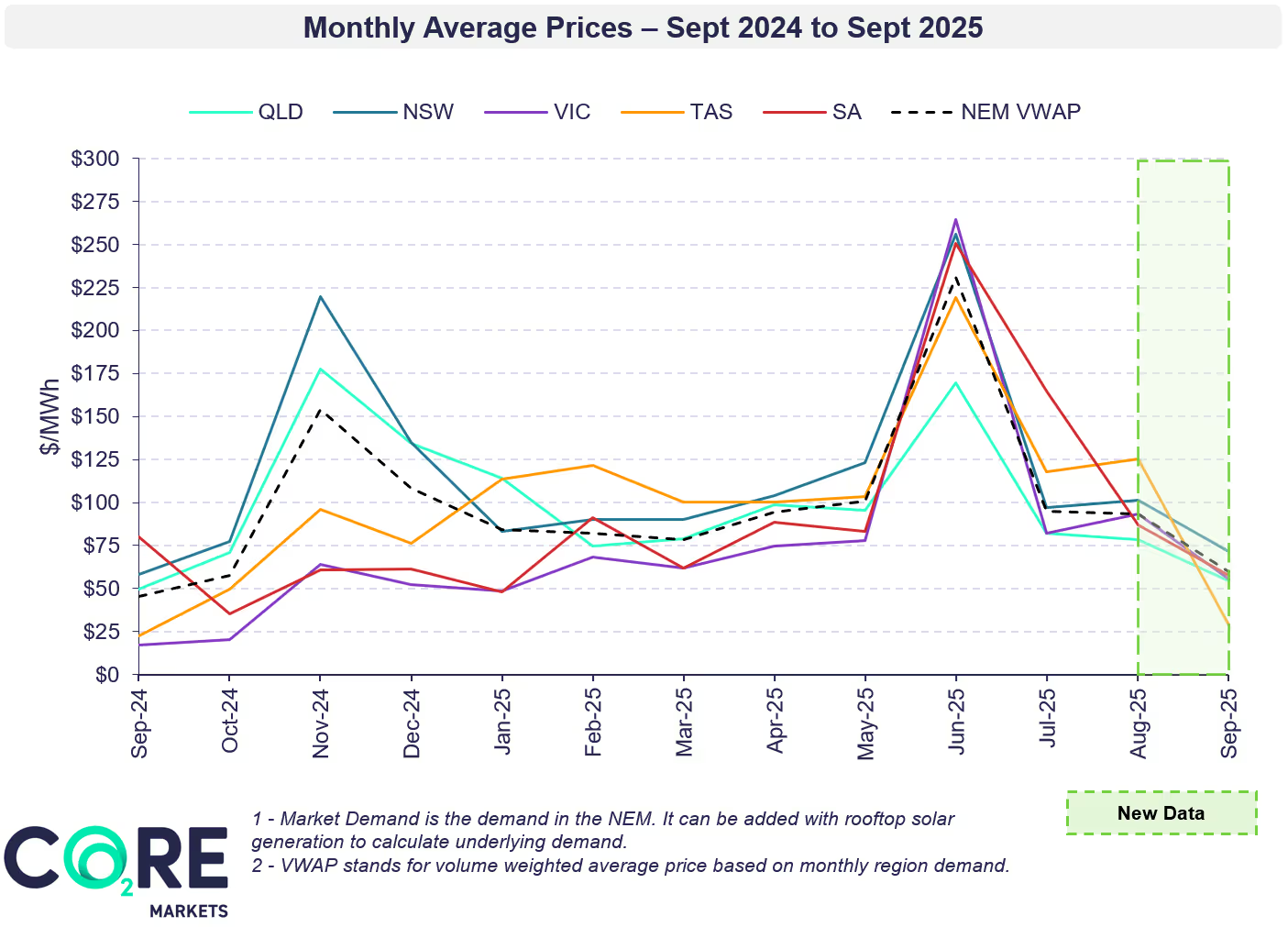
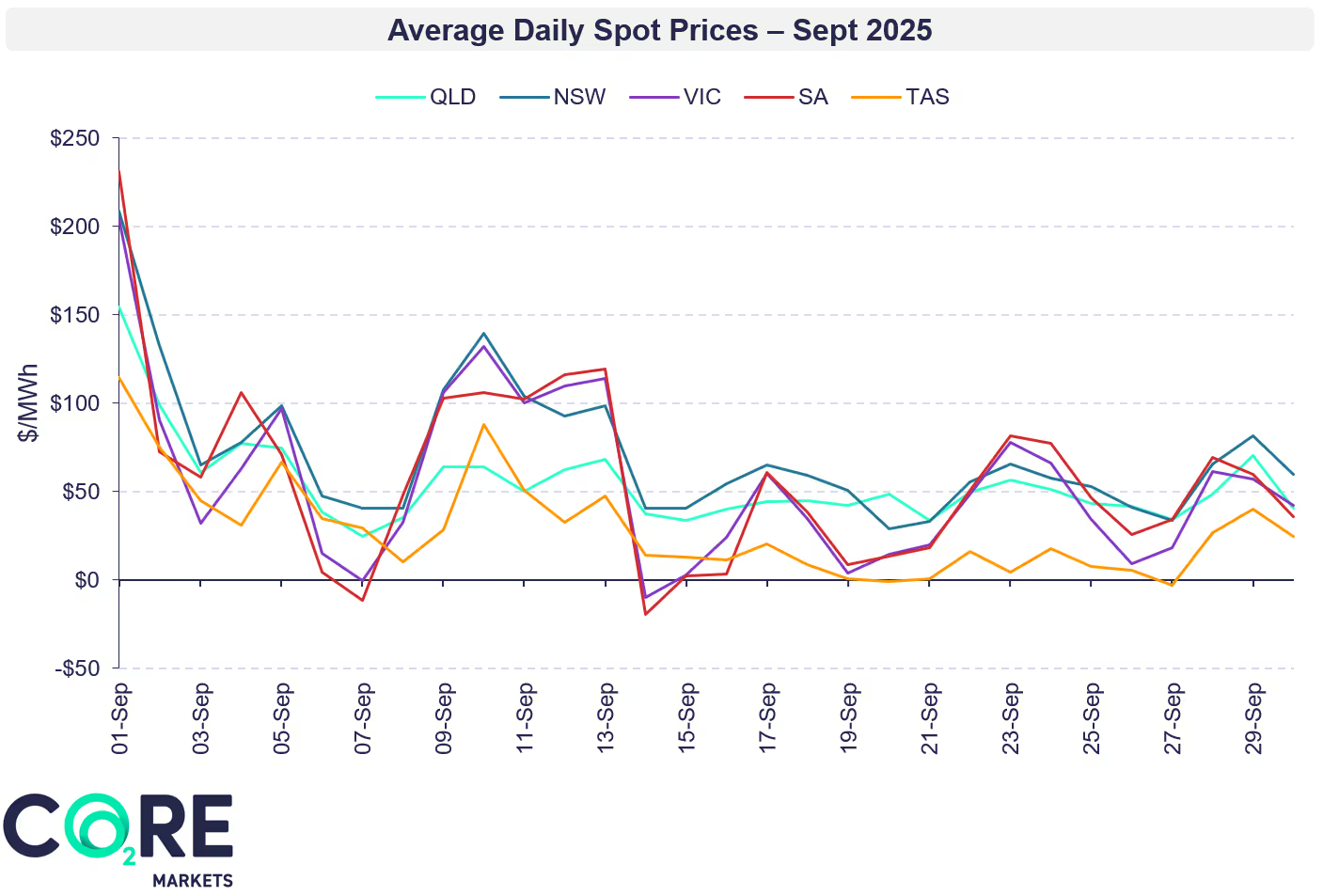

Log in to the CORE Markets platform for more data, insights and commentary. Don’t have an account? Learn more
NEM-wide variable Renewable Energy (VRE) penetration increased by 0.25 percentage points from last month now sitting at 41.58%. This increase was mainly driven by an uptick in wind and rooftop solar across the NEM.
Each month we feature a different asset type - rotating between coverage of solar, wind and BESS projects. This month’s focus is wind asset performance.
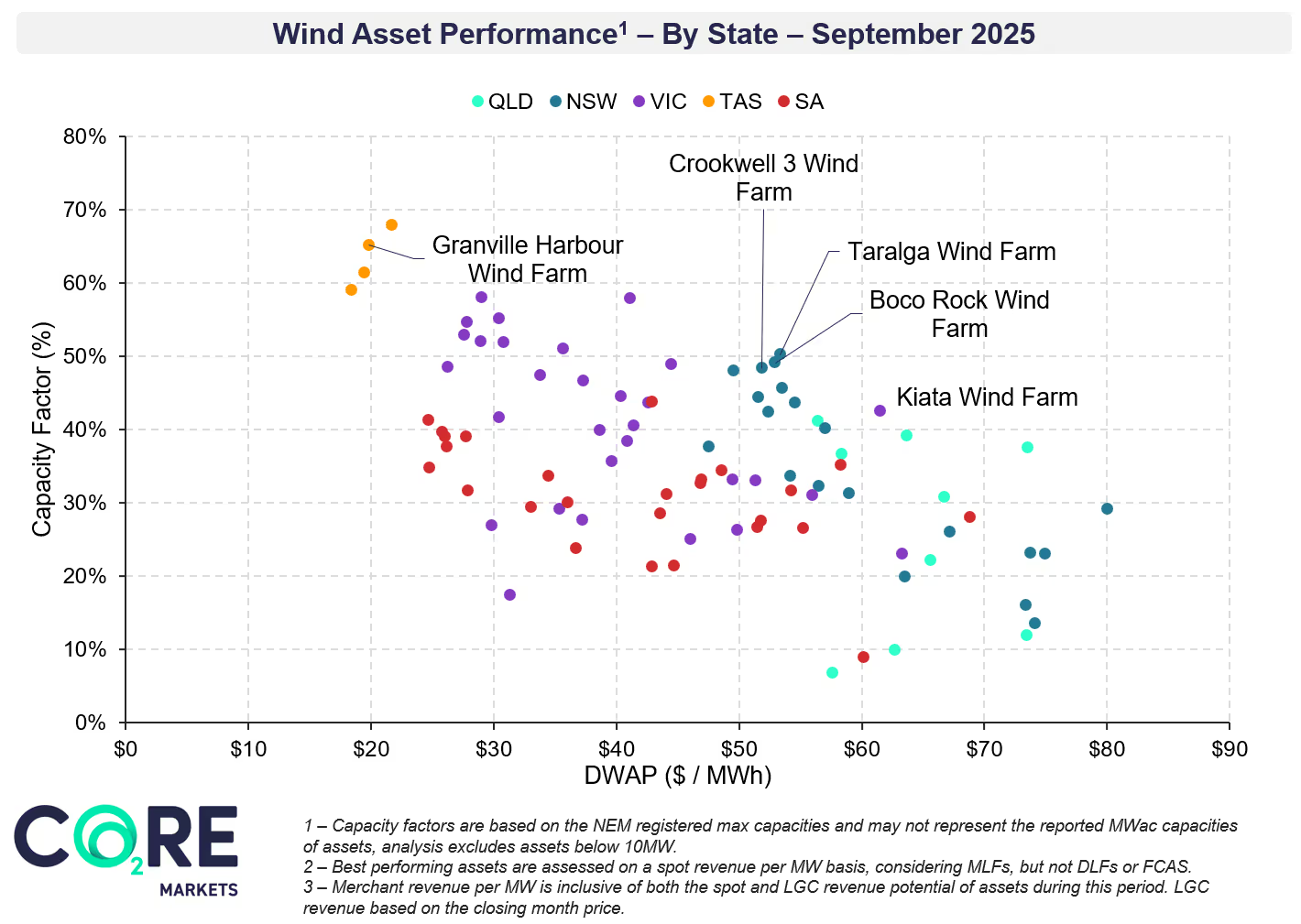

Looking for more in-depth renewables asset analysis?
Learn more about our Wholesale Energy and Offtake Market Report, an important and recurring pulse check for renewable energy buyers and seller.
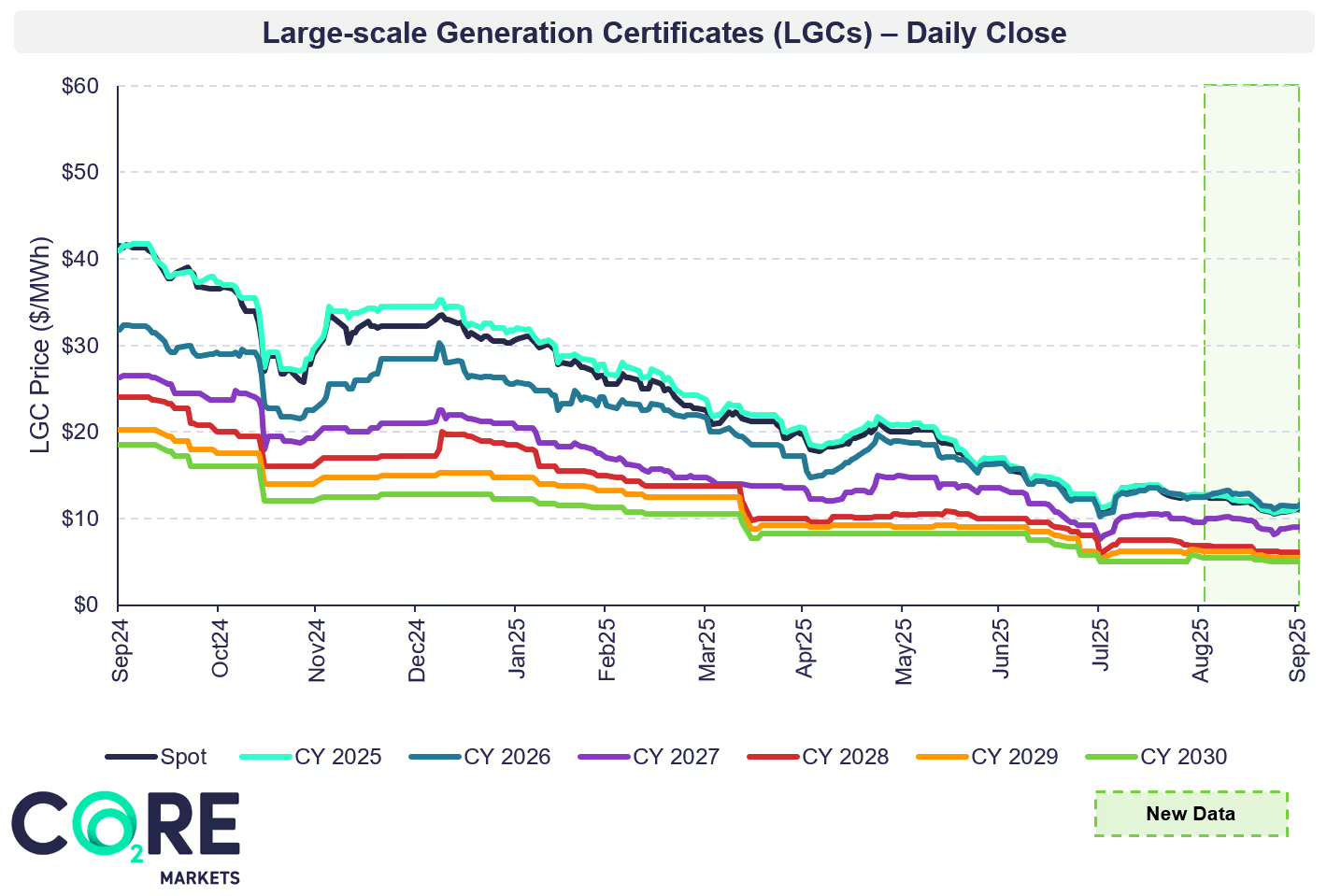
Log in to the CORE Markets platform for more data, insights and commentary. Don’t have an account? Learn more
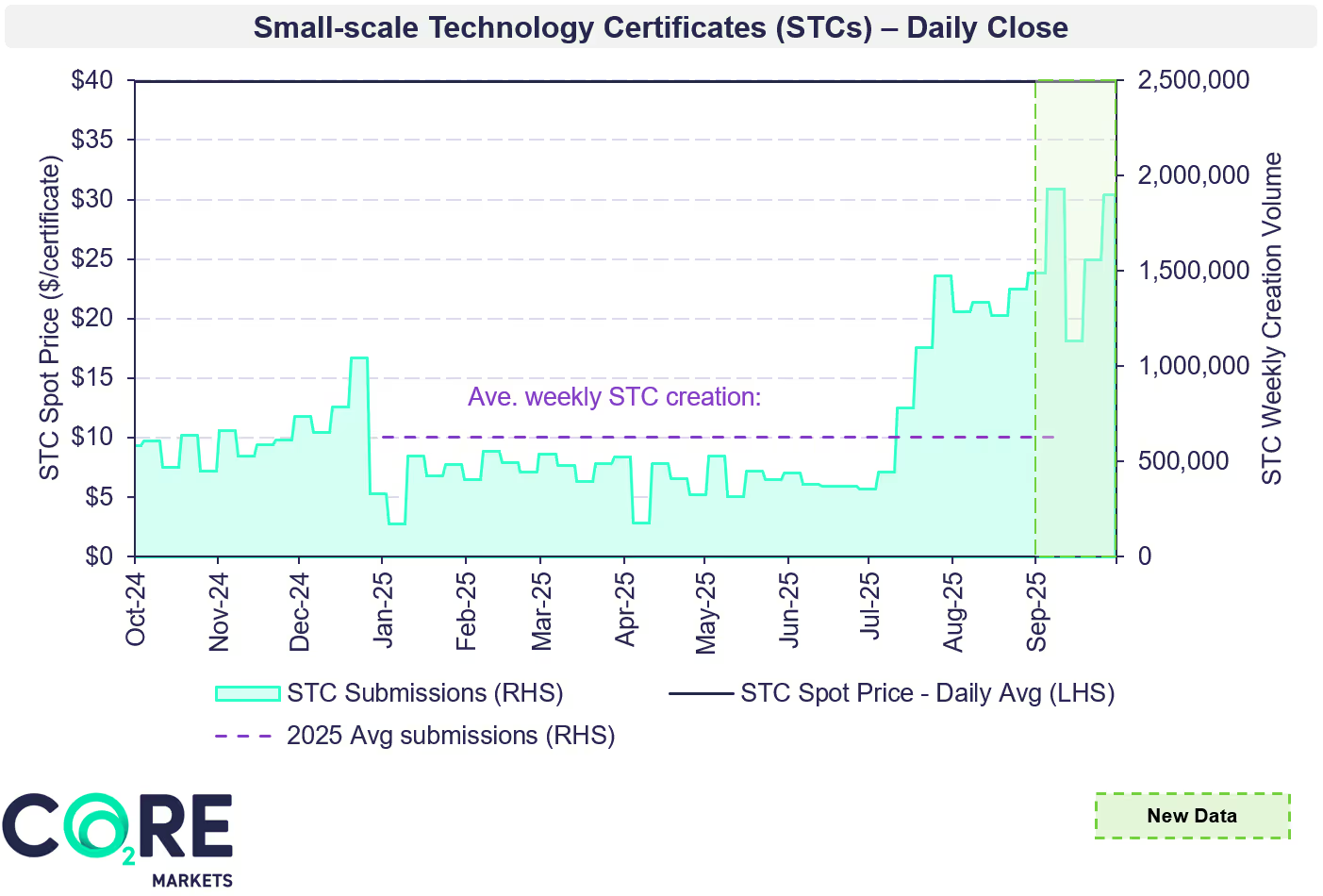
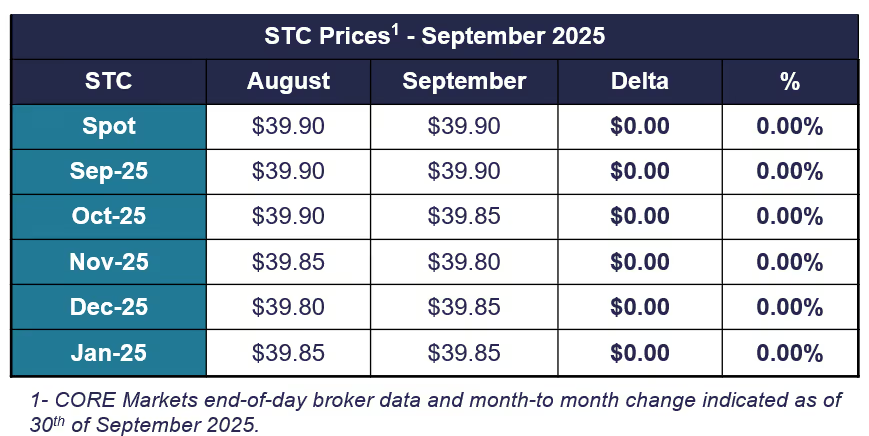
Looking for ACCU coverage? Read our ACCU Market Monthly Report here.
Log in to the CORE Markets platform for more market data, insights and commentary. Don’t have an account? Learn more
This month, the energy market experienced subdued pricing, with an increased frequency of negative price intervals. Seasonal spring trends resulted in higher renewable energy penetration coupled with lower demand across the NEM.
These shifting conditions emphasise potential opportunities and risks for spot-market exposed entities. Asset owners are likely to rely on alternate revenue streams such as PPAs, financial swaps, firm blocks, virtual and physical tolls amongst other offtake mechanisms. These contract mechanisms and in-depth market insights are outlined in CORE Markets’ offtake market report.
Similarly, potential buyers should look to establish appropriate hedging and contracting strategies, to minimise some of the seasonal risk. Compared to the significant volatility observed in winter, spring can present opportunities for buyers, highlighting the need to lock in sound hedging strategies with appropriate timing.
The CORE Markets team partners with renewable energy developers and corporate buyers to manage market risks. Get in touch to explore how we can support your energy market approach.
The LGC market continued a downward trend in spot and forward pricing outcomes through September, while ESC, VEEC and PRC markets showed price volatility based upon policy and compliance dynamics. Staying ahead of these regulatory changes can help guide procurement strategies manage costs effectively.
The CORE Markets team supports demand and supply side market participants in navigating these markets – across strategy, procurement and trading execution. Get in touch to learn how we can support your goals.
The events outlined in this month's update highlight the evolving nature of energy and environemental markets and the complexity of the net zero transition.
To discuss your unique requirements, get in touch with our team today to see how we can help.
Australian Energy & Environmental Market Update - September 2025